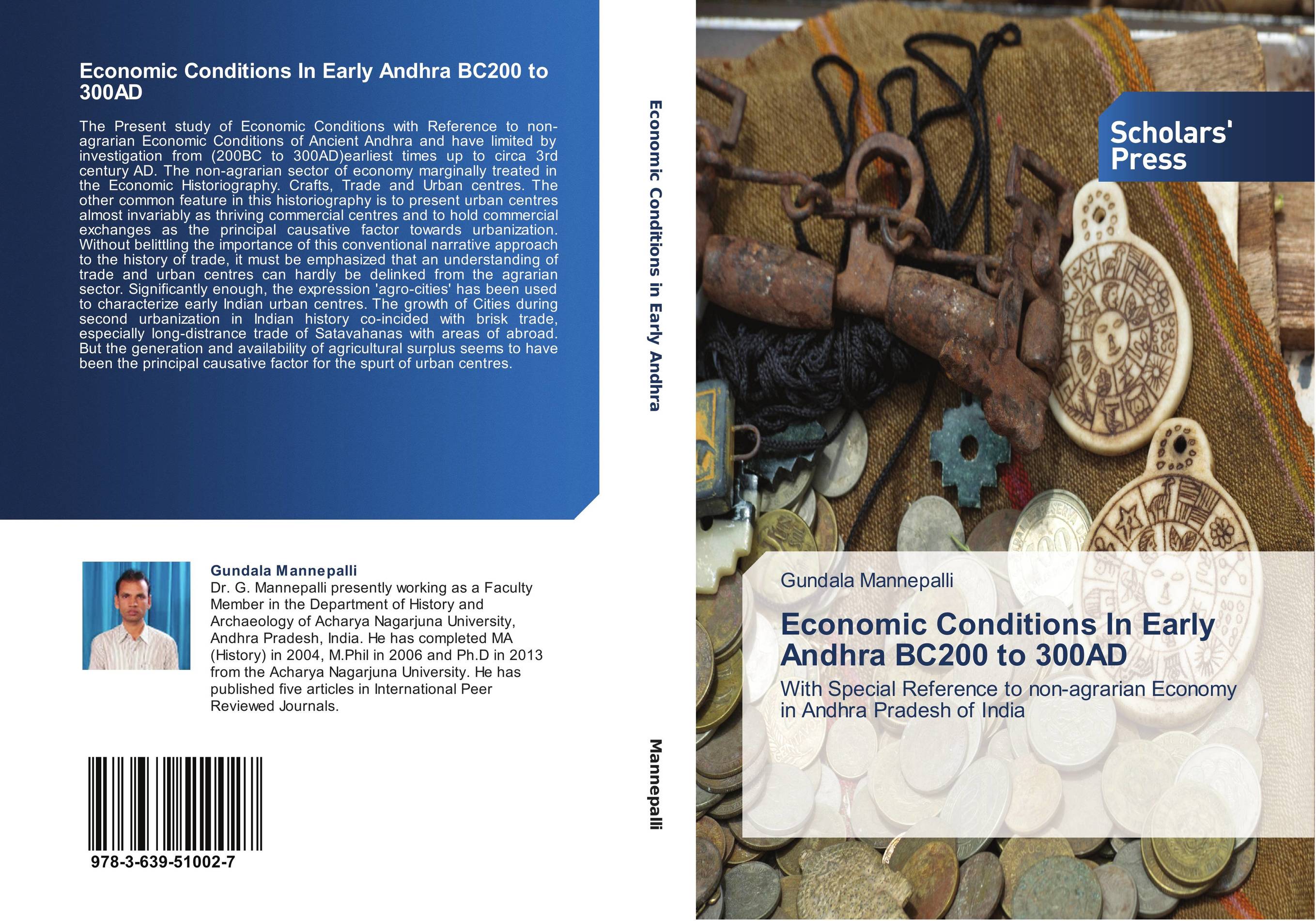| Поиск по каталогу |
|
(строгое соответствие)
|
- Профессиональная
- Научно-популярная
- Художественная
- Публицистика
- Детская
- Искусство
- Хобби, семья, дом
- Спорт
- Путеводители
- Блокноты, тетради, открытки
Economic Conditions In Early Andhra BC200 to 300AD. With Special Reference to non-agrarian Economy in Andhra Pradesh of India

В наличии
| Местонахождение: Алматы | Состояние экземпляра: новый |

Бумажная
версия
версия
Автор: Gundala Mannepalli
ISBN: 9783639510027
Год издания: 2014
Формат книги: 60×90/16 (145×215 мм)
Количество страниц: 316
Издательство: Scholars' Press
Цена: 65780 тг
Положить в корзину
| Способы доставки в город Алматы * комплектация (срок до отгрузки) не более 2 рабочих дней |
| Самовывоз из города Алматы (пункты самовывоза партнёра CDEK) |
| Курьерская доставка CDEK из города Москва |
| Доставка Почтой России из города Москва |
Аннотация: The Present study of Economic Conditions with Reference to non-agrarian Economic Conditions of Ancient Andhra and have limited by investigation from (200BC to 300AD)earliest times up to circa 3rd century AD. The non-agrarian sector of economy marginally treated in the Economic Historiography. Crafts, Trade and Urban centres. The other common feature in this historiography is to present urban centres almost invariably as thriving commercial centres and to hold commercial exchanges as the principal causative factor towards urbanization. Without belittling the importance of this conventional narrative approach to the history of trade, it must be emphasized that an understanding of trade and urban centres can hardly be delinked from the agrarian sector. Significantly enough, the expression 'agro-cities' has been used to characterize early Indian urban centres. The growth of Cities during second urbanization in Indian history co-incided with brisk trade, especially long-distrance trade of Satavahanas with areas of abroad. But the generation and availability of agricultural surplus seems to have been the principal causative factor for the spurt of urban centres.
Ключевые слова: monsoon, urbanism, foreign influence, Roman Coins, slashed coins, Jewellery, trade and polity, trade and religion, trade organisations, Balance of Trade, Sea winds



